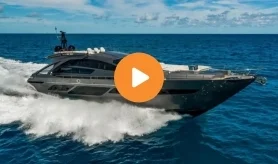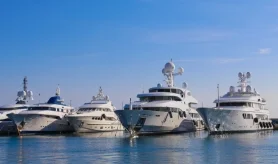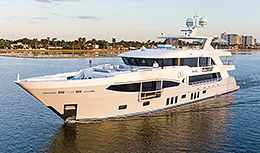- Alaskan Yachts
- Azimut Yachts
- Back Cove Yachts
- Beneteau Yachts
- Benetti Superyachts
- Bertram Yachts
- Boston Whaler
- Broward Yachts
- Buddy Davis Sportfish
- Burger Yachts
- Cabo Yachts
- Catamarans
- Carver Motoryachts
- Center Console
- Chris-Craft Yachts
- Cruisers Yachts
- DeFever Trawlers
- Dufour Sailboats
- Fairline Yachts
- Feadship Yachts
- Ferretti Yachts
- Formula Yachts
- Fountaine Pajot Cats
- Grady-White
- Grand Banks Trawlers
- Hargrave Yachts
- Hatteras Yachts
- Hinckley Picnic Boats
- Horizon Yachts
- Hydra-Sports
- Intrepid Boats
- Jarrett Bay Sportfish
- Jeanneau Yachts
- Kadey-Krogen Trawlers
- Lazzara Yachts
- Lekker Boats
- Luhrs Sportfish
- Marlow Yachts
- Maritimo Yachts
- Marquis Yachts
- Mazu Yachts
- McKinna Motoryachts
- Meridian Yachts
- Midnight Express
- MJM Yachts
- Mochi Craft
- Neptunus Motoryachts
- Nordhavn Trawlers
- Nordic Tugs
- Numarine Yachts
- Ocean Alexander Yachts
- Ocean King
- Offshore Yachts
- Outer Reef
- Oyster Sailing Yachts
- Pacific Mariner Yachts
- Palmer Johnson Yachts
Sun Valley Tour de Force Keeps the West Wild: No Speed Limit
The Sun Valley Tour de Force is a no-speed-limit event on an open road through the wilderness.
Words and photography by Kim Frank and David Concannon.
Phantom Hill.
The words evoke images of iconic places in the American West: Tombstone, Deadwood, or Diablo Canyon each with notorious reputations for danger and stories to tell about violence, scenic beauty, and the pioneer spirit. You can almost hear the screams of the departed or the wailing of ghosts when you say their names.
Except here, on Phantom Hill, 13 miles north of Ketchum, Idaho on State Road 75, where one day each year the silence is broken by screams of another sort: the jet-engine whine of a Bugatti Chiron at top speed, roaring past the sagebrush at 253 miles per hour; the authoritative yet subtle roar of the new McLaren 750S as it joins the “200 mph club” during its North American dynamic debut; or the satisfying thrum of a vintage Porsche 911 Carrera, re-imagined by Singer Vehicle Design for an extra one million dollars over the cost of the vehicle.

To fans of great cars, and for the freedom to drive them as intended, Phantom Hill is synonymous with the names of other legendary places in automotive history: Watkins Glen, Lime Rock, and Road America. But, while these are great tracks, “must drives” to the racing cognoscenti, Phantom Hill is something altogether different. It is the site of a unique event on a public road where, once each year, an unlikely partnership of governments, business, and charity come together to bend the rules, lift the speed limit, and allow drivers to test the limits of their nerves and skill against the limits of their cars. In short: it is an unparalleled opportunity to drive as fast as one can possibly go on a road that is normally home to only wildlife, scenery, and silence. Not for you, the driver, but to help others.

“It’s not a race!” Dave Stone, cofounder of the Sun Valley Tour de Force, is quick to point out. “It’s a rally, for charity.”
To be perfectly accurate, the Sun Valley Tour de Force is a no-speed-limit event on an open road through the wilderness, where drivers of precision or simply gorgeous automobiles can wind out their engines and spin the needles on their tachometers to their red lines, surrounded by snow-topped craggy peaks. At the end of its stunning 3.2-mile course, after drivers’ speeds are captured by global positioning trackers and a laser gun, the drivers gather in a friendly not-for-competition as their highest speeds are posted on a score board. A palpable buzz fills the air, as the drivers compare themselves, their cars, and their speeds. Who will be the fastest of the day? Who can be the fastest in a Porsche? In a McLaren? In a 1981 VW Caddy pickup or the “Mutt Cuts” van from the movie Dumb and Dumber? (In a what? Yes, this is still a charity event in a ski town, high up in the Rocky Mountains.)

In Idaho, at 6,500-foot elevation, July mornings begin with crisp, pure mountain air before spiking to an unrelenting blazing high desert heat. At 7:30 a.m., steam from breath and coffee rises in white wisps as volunteers set up the staging area and drivers’ tent. For those that have read the instructions in the drivers’ packet, they are comfortable in their down puffies, hats, and gloves. The organizers quietly take note of those that are freezing, because their shivering means they are unprepared. Their runs could be shifted to the hot afternoon, when the sun beats down and crosswinds descend from the mountains, stealing speed in the high-altitude heat. The sun peers over the foothills to the east, rising in time to illuminate the incoming winding line of traffic.

This is not your ordinary Saturday. Far from the typical chugging of trucks pulling campers, RVs, and a host of recreational vehicles headed to play in the woods, this vehicle snake is low and throaty, windshields and candy-colored polyurethane glistening as the rising sun times the debut. One by one, the cars Porsches, McLarens, an Audi R8 Spyder, Corvette, Ford and Ferraris, and the outlier: that 1981 VW Caddy pickup take their place in the paddock below a granite-strewn mountain and above a wild river. Tension is high as the first heat begins in less than an hour; while this is not a race, there are times to strive toward, personal bests to achieve, and in some cases, friendly family rivalries.
Alex Hainer (as in Alexandra), age 25, is no stranger to speed. As a young girl, Alex developed a love of racing and the handling capability of high-performance cars from her father, former downhill ski racer turned professional race car driver, Anders Hainer. The Sun Valley Tour de Force has been a family affair for the Hainers for the past few years. Anders, Alex, and Julie Hainer (mom, wife, and total badass), will all be driving two runs, switching between a 2020 McLaren 720S Spider and a 2022 Porsche 911 Turbo S. As the sun climbs, layers are shed, the first heat cars are positioned. Alex takes her place behind the driver’s seat of the McLaren, flashes a smile, and secures her helmet before being led four miles up the highway to the start. An hour later, she is climbing out of the butterfly wing doors, helmet off, her face widening into a grin as she sees her time: 218.87 mph.

Alex must sweat it out over the next several hours as drivers in heat after heat rack up their times, challenging her own. As Anders pulls into the driver’s area post-run, he is greeted enthusiastically by both his wife and daughter. “You were fast! But you couldn’t beat Alex!” At 217.0 mph, Anders was just shy and this seemed to please him. Joining them in the “Over 200 mph Club” that day was Julie Hainer at 211.94 mph and Beshi Miraj, a female computer programmer who helped create the innovative GPS speed trackers used this year, driving a 2020 Audi R8 Spyder that clocked at 203.05 mph. A banner year for female drivers, this was the first time a woman topped the leaderboard.

The “force” behind the Sun Valley Tour de Force is a dynamic duo, Co-Directors Maya Blix and Whitney Werth Slade. Inspired by both a love of cars and a desire to raise funds for local charities, the two, along with their board, have built this event from a locally-based fun run into an international destination weekend, named by Barron’s as “one of the best driving events in the world”. The fastest speed on record, so far, is a Bugatti Chiron at 253.01 mph.
Of course, it’s not all about speed. Leading up to the full-throttle day is an organized run over a scenic mountain pass, sponsor events, technical inspection and test drives, a curated car show, and a live auction celebration dinner. Car enthusiasts have ample opportunity to geek out on a range of vehicles from vintage Porsches, Shelby Cobra, and other restored barn finds displayed on the Friday night car show at the public car show, which draws 10,000 visitors to this small town of only 3,800 year-round residents. For those who love customizing an icon, the show-stoppers are the air-cooled Porsches “reimagined” by Singer. These next-level, bespoke 911s feature meticulously handcrafted details, from vintage-style dashboards to hand-stitched Italian leather throughout, combined with drivability one can only dream about. These cars are the penultimate in form meets function.

A banner year for female drivers, this was the first time a woman topped the leaderboard.
Phantom Hill, an area previously unknown to those outside of Ketchum except for the presence of a small wolf pack, has become famous for howling of a different sort: that of the engines of Porsches, McLarens, Fords, and Chevys stretched to their limits. And by the time the sun goes down on Saturday evening, the Sun Valley Tour de Force community will raise an unprecedented one million dollars for charity. Through the comradery- and adrenaline-filled weekend event, it’s clear that a shared love of cars and their inner workings an automotive celebration of creativity, engineering, and mechanics can be channeled into a powerful force for good. Meanwhile, a few miles north of town, the wilderness falls silent again. Until next year.

Request a Copy
Special Thanks to Our Sponsors








